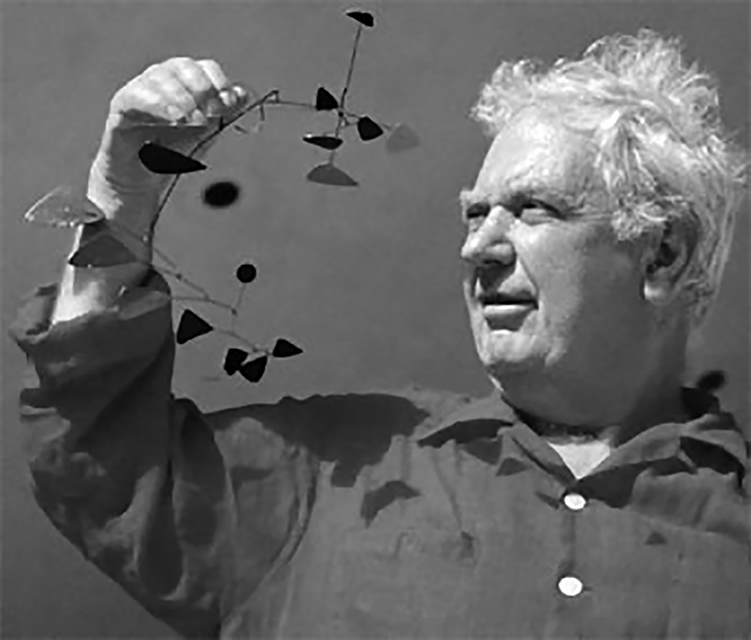

In the 1960s and 1970s Alexander Calder’s colossal stabiles, commissioned for public sites all over the world, used arching forms and dynamic surfaces to complement the geometric regularity of modern architecture. Another version of Flexibility of Balance is located at the Calder Foundation in New York. This is one of the last works by Alexander Calder.

Alexander Calder was a sculptor, painter, illustrator, printmaker and designer. Born in Philadelphia, he graduated with a degree in mechanical engineering, then worked as a freelance artist. From 1926 he lived part of the time in Paris, attending the sketching classes at the Académie de la Grande Chaumière and making wood and wire animals with movable parts. He was influenced in particular by Joan Miró and Paul Klee.
In 1930, after visiting Piet Mondrian’s studio, Calder began experimenting with abstract constructions, joining Abstraction Création in 1931. He became a leading exponent of Kinetic Art, developing the mobile – a kinetic construction of disparate elements. Later he started to synthesise Constructivist methods and materials with abstract forms derived from Surrealist imagery. From the 1950s he focused on ‘stabiles’: largescale constructions in cut and painted metal sheets.